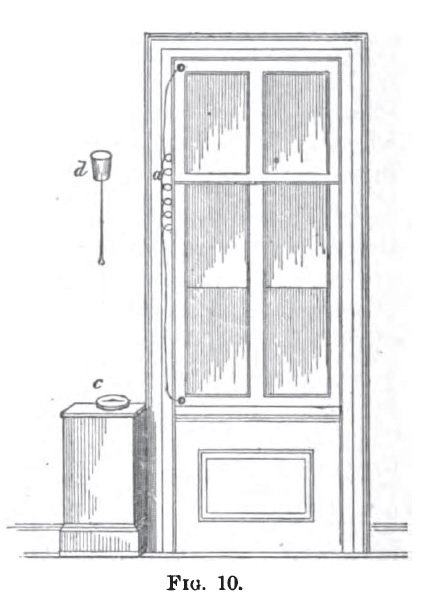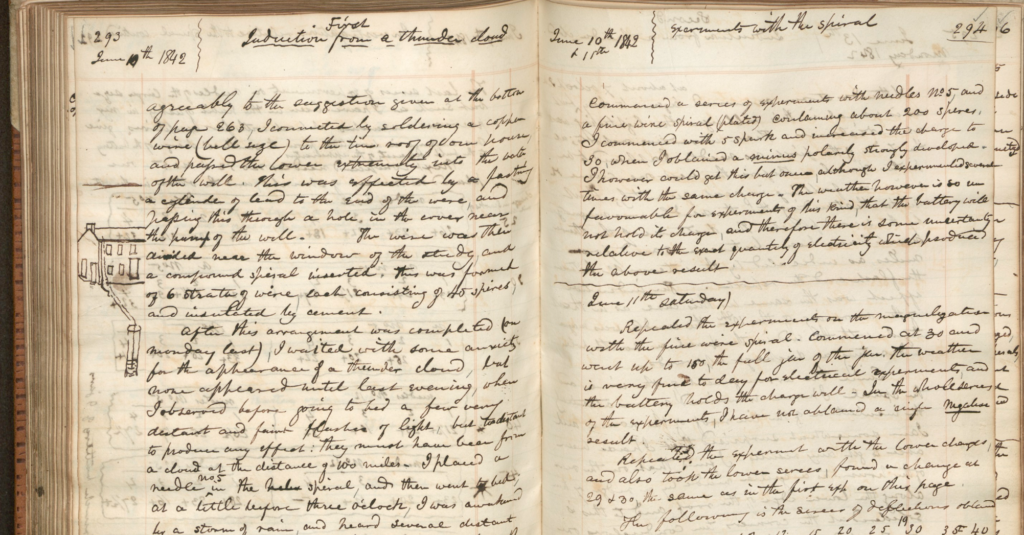Joseph Henry detected radio waves in the 1840’s. He described his experiment involving lightning using an antenna that began with the tin roof of his house in Princeton and proceeded along a long wire that terminated in a water well. One section of the descending wire was diverted indoors. This section was spiraled and a large un-magnetized sewing needle was inserted into the spiral. Immediately after a flash of lightning he removed the needle and tested its magnetization using a magnetic compass. He found that after a lightning flash the needle was magnetized. He suggested that this effect was due to magnetic induction and not the presence of charged particles. The argument here was the due to the distance of the lightning flash – up to 8 miles away. The illustration below showing the spiral and needle in his study is due to Joseph Henry in a 1859 report.
It is well known in the modern day that lightning flashes cause AM radios to crackle. We know therefore that lightning produces radio frequency interference (RFI). This observation of Henry definitively establishes detection of radio waves and at a time that precedes Hertz’s experiments in the late 1880’s by more than 40 years. It is also 20 years before James Clerk Maxwell’s landmark work. It is not clear, however, that Henry understood the difference between electromagnetic induction (for example, near-field coupling of coils in a transformer) and radio transmission and reception (far field phenomena – that is at distances much greater than the radio wavelength).

 Henry_radio_lightning.pdf
Henry_radio_lightning.pdf